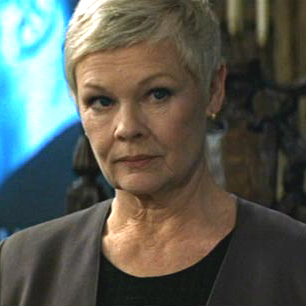 Bond came to film life out of the sixth
novel titled Dr. No,
after nearly a decade of Ian Fleming trying to get his novels made into
motion pictures. A Canadian producer,
Harry Saltzman, obtained the rights to make the novels into films. Even Harry had nearly given up until he found
American producer Albert R. Broccoli who was both interested and financed the
work through United Artists. Financing
was not great at only one million dollars but it was enough to get the film
made. Dr. No was not the producers first choice for a film, as Thunderball had more potential, but the
tropical location of Dr. No could
allow an action film to be made within the budget that was provided.
Bond came to film life out of the sixth
novel titled Dr. No,
after nearly a decade of Ian Fleming trying to get his novels made into
motion pictures. A Canadian producer,
Harry Saltzman, obtained the rights to make the novels into films. Even Harry had nearly given up until he found
American producer Albert R. Broccoli who was both interested and financed the
work through United Artists. Financing
was not great at only one million dollars but it was enough to get the film
made. Dr. No was not the producers first choice for a film, as Thunderball had more potential, but the
tropical location of Dr. No could
allow an action film to be made within the budget that was provided.
The greatest dilemma facing the producers
was who could play the role of James Bond, Bond’s girl, and the villain Dr.
No. Thoughts of Richard Burton or Cary
Grant were considered for the lead role.
They decided to take a chance on Sean Connery, a new young actor with a
Scottish background. Terence Young, the
director, who was known for his style and elegance in film- making, quickly used
his skill to provide Connery a more sophisticated image. The role of Honey Ryder was quickly chosen as
Ursula Andress who was a Swiss Beauty.
The villain turned out to be the hardest selection. Ian Fleming recommended his friend and
playwright Noel Coward but the answer from Noel was “Dr. No is No! No!
No!” A trained actor from New York was
chosen for the role, Joseph Wiseman. Once
selection of the cast was complete, filming began in Jamaica in January 1962
without delay.
Albert Broccoli had faith in the
film. He took a somewhat meager budget
and turned the Ian Fleming novel into a production of value on the screen with
high technical standards. Dr. No was
completed by October 1962 where it was released in England successfully under
the United Artist banner. In April 1963,
Bond was introduced to American theatres where it had an excellent run with the
new spy hero. Albert Broccoli started
with Dr.No to create high budget,
award winning Bond films for the next thirty three years until his
passing. Now his daughter Barbara
Broccoli, who was born just before the production of Dr. No, carries on the Bond film dynasty for her family.






